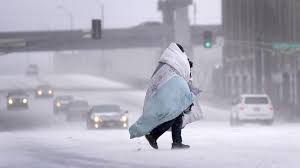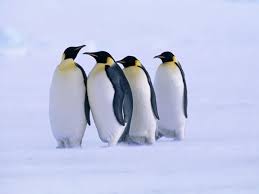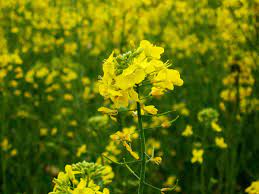Today’s Current Affairs: 27th December 2022 for UPSC IAS exams, State PSC exams, SSC CGL, State SSC, RRB, Railways, Banking Exam & IBPS, etc
Table of Contents
Pollution In Rivers : Report By Central Pollution Control Board

A recent report from the (CPCB) said that the number of polluted stretches in India’s rivers has fallen from 351 in 2018 to 311 in 2022 though the number of most polluted stretches is practically unchanged.
- The CPCB network monitors water quality at 4,484 locations in 28 States and seven Union Territories including rivers, lakes, creeks, drains and canals.
- The number of polluted river stretches categorised in ‘Priority 1 to 5.
- Priority 1:River stretches with a BOD exceeding 30 mg/L are considered the most polluted and thus need the most urgent remediation.
- Priority 2: Indicating a BOD of 20-30 mg/L.
- Priority 3: BOD between 10-20 mg/l
- Priority 4: BOD between 6-10 mg/l.
- Priority 5: Indicating 3-6 mg/L.
- While Gujarat and Uttar Pradesh had the maximum number of ‘Priority 1’ river stretches (6), Maharashtra had the maximum number of polluted river stretches i.e. 55, followed by Madhya Pradesh (19), Bihar (18), Kerala (18), Karnataka (17) and Uttar Pradesh (17).
Biological Oxygen Demand (BOD):
- BOD is defined as the amount of dissolved oxygen needed by bacteria in decomposing the organic wastes present in water.
- The higher value of BOD indicates low dissolved oxygen content of water.
Central Pollution Control Board (CPCB):
- The Central Pollution Control Board (CPCB) of India is a statutory organisation under the Ministry of Environment, Forest and Climate Change.
- It was established in 1974 under the Water (Prevention and Control of Pollution) Act, 1974.
Polar Bear Dying At a Fast Rate : Report

Polar bears in Canada’s Western Hudson Bay, an inland sea connected to the Arctic Ocean, are dying at a fast rate, according to a new government survey, the Associated Press reported recently.
- It also revealed that females and younger polar bears are the worst affected.
- At the time of the survey, conducted by air in 2021, researchers calculated that there were 618 bears left in Western Hudson Bay the region includes Churchill, the town that is known as ‘the Polar Bear Capital of the World’.
- When the last survey took place in 2016, there were 842 bears in the area.
- According to the researchers, Western Hudson Bay has witnessed a drop of around 50% in the population of polar bears since the 1980s.
- Polar bears are one of the most significant predators in the Arctic region and they keep biological populations in balance.
- The big kills made by them serve as a food resource for scavengers like Arctic foxes and Arctic birds.
- If polar bears aren’t able to hunt animals like seals, it can severely impact the food chain and health of the ecosystem.
- Researchers have also found that once polar bears can’t find seals to eat, they would quickly move to kill and survive on other creatures in the Arctic region.
- This would threaten the existence of species like the Arctic fox or the walrus.
- Moreover, it might also cause the overpopulation of seals, which could endanger the existence of crustaceans and fish that are an important food source for local human populations as well as other Arctic wildlife.
- The polar bear is classified as “vulnerable” on the IUCN Red List.
Bomb Cyclone:

Bomb cyclone continues to batter US as death toll mounts to 34
- A bomb cyclone is a mid-latitude storm in which the central pressure drops fast at one millibar per hour for at least 24 hours.
- This quickly increases the pressure difference, or gradient, between the two air masses, making the winds stronger.
- As the winds blow, the rotation of the Earth creates a cyclonic effect.
- The direction is counterclockwise in the Northern Hemisphere (when viewed from above).
- A bomb cyclone is formed when the air of different air masses (cold, dry) comes together.
- As the warm air rises, it creates a cloud system lowering air pressure and forming into a storm circulating counterclockwise around the low-pressure area.
- The bomb cyclone will be characterised by cold winds, which are also expected to pick up, and wind chill temperatures could drop to dangerous lows far below zero enough to cause frostbite within minutes.
- The dangerous storm is expected to hit everyone east of the Rockies around two-thirds of the country.
Antarctica’s Emperor Penguins : Report

The emperor penguin, which relies on ice for breeding, is the most vulnerable of Antarctica’s species.
- Emperor penguin (Aptenodytes forsteri) is the tallest and heaviest of all living penguin species and is endemic to Antarctica.
- According to a recent study, greater efforts are needed to conserve Antarctic ecosystems, and populations of up to 97% of land-based Antarctic species may decline by 2100 if the negative consequences of climate change are not addressed.
- The mitigation strategies include limiting global warming to less than 2 degrees Celsius, managing non-native species and diseases, and managing and protecting species.
- In Antarctica, such conservation is surprisingly cheap, as implementing all strategies together could cost as little as USD 23 million per year until 2100 (or about USD 2 billion in total).
Amrit Bharat Station Scheme:

Railways plans to modernise 1,000 small stations under Amrit Bharat Station Scheme.
- This is apart from the ambitious plan to revamp 200 big stations under a separate redevelopment programme.
- The aim is to identify developing cities with potential and envisage railway stations as city centres that would link not just various parts of the city but also between different cities in the future.
- According to need, the divisional railway managers will take a call on modernisation works in a phased manner
- These stations will be redeveloped under what is being internally called the “Khurda model of redevelopment”.
- Khurda station in Odisha has been modernised for Rs 4 crore with all contemporary amenities for passengers.
- The main structure was renovated, the facade was redone and the number of railway tracks was also increased.
- Modernisation of these stations would include improved station approaches to ensure smooth access by widening roads, removal of unwanted structures, properly designed signages, dedicated pedestrian pathways, well-planned parking areas, and improved lighting among others.
- Elements of landscaping, green patches and local art and culture should be used to create a pleasant experience for the station users.
New Method For Freezing And Storing Coral:

While working on Australia’s Great Barrier Reef, scientists have successfully trialed a new method for freezing and storing coral in their first trial.
- This cryogenically frozen coral can be stored and later reintroduced to the wild.
- But current process requires sophisticated equipment including lasers, however a new lightweight “cryomesh” can be manufactured cheaply and better preserves coral.
- As rising ocean temperatures destabilize the delicate ecosystems of Coral, therefore scientists are striving to protect coral reefs.
- The Great Barrier Reef has suffered four bleaching events in the last seven years, including the first-ever bleach during a La Niña phenomenon, which typically brings cooler temperatures.
- Scientists used the cryomesh to freeze coral larvae at the Australian Institute of Marine Sciences (AIMS).
- Cryomesh was devised by a team from the University of Minnesota’s College of Science and Engineering.
- This is lightweight and can be manufactured cheaply.
- It better preserves coral and has the properties of cryoplates.
- The mesh technology will help store coral larvae at -196°C (-320.8°F).
Coral Reefs:
- Corals are marine invertebrates or animals which do not possess a spine. In scientific classification, corals fall under the phylum Cnidaria and the class Anthozoa.
- Coral is made up of genetically identical organisms called polyps.
- These polyps have microscopic algae called zooxanthellae living within their tissues.
What Are Dark Patterns?

An increase in the cases of “Dark Patterns” or “Deceptive Patterns” have been noted where internet-based companies have been tricking users into agreeing to certain conditions or clicking a few links.
- Such acceptances and clicks are flooding inboxes of the users with promotional emails they never wanted, making it hard to unsubscribe or request deletion.
- Dark Patterns are unethical UI/UX (user interface/user experience) interactions, designed to mislead or trick users to make them do something they don’t want to do.
- In turn, they benefit the company or platform employing the designs.
- By using dark patterns, digital platforms take away a user’s right to full information about the services they are using and their control over their browsing experience.
- Examples of Dark Patterns include “baseless” countdowns for online deals, conditions in fine print that add on to costs, making cancellation buttons hard to see or click, making ads appear as news reports or celebrity endorsements, auto-playing videos, forcing users to create accounts to finish a transaction, silently charging credit cards after free trials end, and using dull colours to hide information that users should know about.
- Social media companies and Big Tech firms such as Apple, Amazon, Skype, Facebook, LinkedIn, Microsoft, and Google use dark or deceptive patterns to downgrade the user experience to their advantage.
- Another dark pattern on social media platforms like Instagram is sponsored video ads getting scattered between reels and stories users originally opted to view, tricking them for several seconds before they can see the small “sponsored” label.
- Google-owned YouTube nags users to sign up for YouTube Premium with pop-ups, obscuring final seconds of a video with thumbnails of other videos.
Good Governance Day : 25th December

Good Governance Day being celebrated on the birth anniversary of former Prime Minister Atal Bihari Vajpayee.
- Governance is the process of decision-making and the process by which decisions are implemented (or not implemented).
- Governance can be used in several contexts such as corporate governance, international governance, national governance and local governance.
- Good Governance is defined as “the manner in which power is exercised in the management of a country’s economic and social resources for development”
- The concept of good governance existed even during the days of Chanakya.
- He had mentioned it elaborately in Arthashastra.
- Citizens centric administration lies on the foundation of good governance.
8 Principles of Good Governance:
- Participation
- Rule of Law
- Consensus Oriented
- Equity and Inclusiveness
- Effectiveness and Efficiency
- Accountability
- Transparency
- Responsiveness
DMH-11 : Genetically Modified (GM) Mustard

The Genetically Modified (GM) mustard Dhara Mustard Hybrid (DMH-11) was tested in the field and shown to be more productive.
- Production of the DMH-11 variety is not interfering with honey bees’ natural pollination practices.
- Genetically Modified (GM) Crops are derived from plants whose genes are artificially modified, usually by inserting genetic material from another organism, in order to give it new properties, such as increased yield, tolerance to a herbicide, resistance to disease or drought, or improved nutritional value.
- Earlier, India approved the commercial cultivation of only one GM crop, Bt cotton, but Genetic Engineering Appraisal Committee (GEAC) has recommended GM Mustard for commercial use.
- DMH-11 is an indigenously developed transgenic mustard.
- It is a genetically modified variant of Herbicide Tolerant (HT) mustard.
- DMH-11 is a result of a cross between Indian mustard variety ‘Varuna’ and East European ‘Early Heera-2’ mustard.
- It contains two alien genes (‘barnase’ and ‘barstar’) isolated from a soil bacterium called Bacillus amyloliquefaciens that enable breeding of high-yielding commercial mustard hybrids.
- Barnase in Varuna induces a temporary sterility because of which it can’t naturally self-pollinate. Barstar in Heera blocks the effect of barnase allowing seeds to be produced.
- DMH-11 has shown approximately 28% more yield than the national check and 37 % more than the zonal checks and its use has been claimed and approved by the GEAC.
- “Bar gene” maintains the genetic purity of hybrid seed.
Tribute To Pandit Madan Mohan Malaviya:

The Prime Minister recently paid tribute to Pandit Madan Mohan Malaviya on his jayanti at a function at Parliament.
- Pandit Madan Mohan Malviya was born on December 25, 1861, in Allahabad, Uttar Pradesh.
- He is known for his contribution to India’s education system and his role in the Indian Independence movement.
- Pandit Madan Mohan Malviya was given the title of ‘Mahamana’ or great soul by Mahatma Gandhi, who considered him as an elder brother.
- In 2014, Pandit Malviya was posthumously conferred with Bharat Ratna, the country’s highest civilian award.
- In 2016, the Indian Railways started the Varanasi-New Delhi Mahamana Express in the leader’s honour.
- He played a key role in the Indian independence struggle against British rule and founded the Banaras Hindu University (BHU) in 1916. At the BHU, he served as Vice-Chancellor from 1919 to 1938.
- Malaviya was one of the early leaders of the Hindu Mahasabha, and helped found it in 1906. He was a social reformer and a successful legislator, serving as a member of the Imperial Legislative Council for 11 years (1909–20).
- He was also one of the founders of Scout and Guide in India.
- One of the most famous slogans, ‘Satyamev Jayate’ was said by Pandit Malviya in the session of 1918 when he was the President of the Indian National Congress.
- Pandit Madan Mohan Malviya was the President of Indian National Congress for four sessions (1909, 1913, 1919 and 1932). Pandit Malviya played a big role in the Civil Disobedience and Non-cooperation movement which were led by Mahatma Gandhi.
- He was the chairman of Hindustan Times from 1924 to 1946 and he also founded many Hindi and English newspapers, namely: The Leader, Hindustan Dainik, Maryada etc.
- Malaviya espoused free and compulsory primary education, opposed the system of indentured labour in the British Empire, and supported the nationalisation of railways.
Veer Bal Diwas : 26th December

Prime Minister of India had recently announced that 26th December will be observed as ‘Veer Bal Diwas’, to mark the martyrdom of Sri Guru Gobind Singh’s sons.
- On December 26, 1707, Sahibzada Zorawar Singh and Sahibzada Fateh Singh attained martyrdom when they were executed on the orders of Aurangzeb.
- Guru Gobind Singh was the 10th Sikh guru.
- He became the Sikh guru at the age of nine, following the demise of his father, Guru Tegh Bahadur, the ninth Sikh Guru.
- Also known for his significant contributions to the Sikh religion, including the introduction of the turban to cover hair.
- He is renowned for founding the principles of Khalsa or the Five ‘K’s i.e kesh (uncut hair), kanga (wooden comb), kara (iron or steel bracelet), kirpan (dagger) and kachera (short breeches).
- He fought against the Mughals later in the battle of Muktsar in 1705.
- Guru Gobind Singh was killed by a Mughal assassin in 1708, a year after the death of Aurangzeb.
Srimukhalingam Temple : Urge To include In UNESCO’s List Of World Heritage Sites

The Srimukhalingam temple chief priest urged the Archaeological Survey of India (ASI) to get the historic Siva temple included in UNESCO’s list of World Heritage Sites
Srimukhalingam Temple:
- Architectural masterpieces were created by the rulers of the Eastern Ganga dynasty in the then-capital of the Kalinga kingdom.
- Srimukhalingam temple is dedicated to Lord Shiva, known as Sri Mukha Lingeswara Swamy, housing 3 Ancient Temples at one Location.
- The Trinity of Madhukeswara, Someswara and Bheemeswara Temples are a testimony to the magnificent architectural skills of Kalinga Kings.
- This temple is built in Kalinga architectural style on the banks of the Vamsadhara river.




